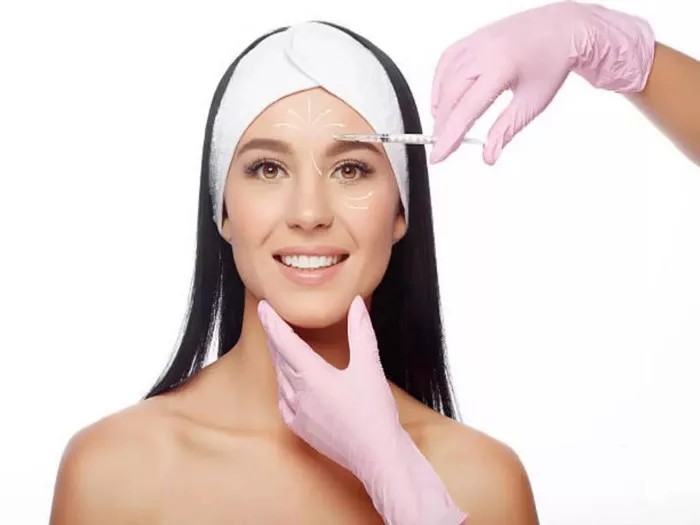In the ever-evolving landscape of skincare, retinol has emerged as a revered ingredient, touted for its transformative powers in the pursuit of youthful, radiant skin. This comprehensive guide navigates through the promises and realities, seeking to answer a fundamental question: Can retinol truly reverse wrinkles? As we embark on this journey, let’s delve into the science, application, and nuanced aspects of incorporating retinol into a skincare routine.
The Science Behind Retinol
At the core of retinol’s efficacy lies its ability to communicate with skin cells at a cellular level. Retinol, a derivative of vitamin A, undergoes conversion into retinoic acid once applied to the skin. This transformation triggers a cascade of events within the skin cells, stimulating the production of collagen, a protein crucial for maintaining skin elasticity. By promoting cellular turnover, retinol contributes to shedding old, damaged skin cells and ushering in newer, more youthful ones. Understanding this intricate cellular symphony forms the foundation for comprehending how retinol may address the appearance of wrinkles.
Can Retinol Reverse Wrinkles?
Clinical Evidence: Numerous clinical studies have explored the impact of retinol on wrinkles, and the results are promising. Research suggests that regular use of retinol can lead to a reduction in the depth and appearance of wrinkles. The mechanism involves not only collagen stimulation but also the inhibition of enzymes that break down collagen and elastin, further contributing to anti-aging effects.
Long-Term vs. Short-Term Results: While some individuals may witness noticeable improvements in a relatively short time, the long-term benefits of retinol become more apparent with consistent and prolonged use. Patience is key, as cellular turnover and collagen production are gradual processes that unfold over weeks and months.
Addressing Different Types of Wrinkles: Retinol has shown versatility in addressing various types of wrinkles, including fine lines, expression lines, and deeper wrinkles. Its ability to enhance collagen production and encourage skin renewal makes it a versatile ally in the battle against the multifaceted nature of skin aging.
Navigating the Skincare Routine
Start Low and Go Slow: Integrating retinol into a skincare routine requires a delicate approach. Start with a lower concentration and gradually increase over time as your skin builds tolerance. This “start low and go slow” strategy minimizes the risk of irritation and allows your skin to acclimate to the potent effects of retinol.
Consistency is Key: Consistency in application is paramount when seeking the benefits of retinol. Incorporate retinol into your nightly routine, ensuring clean, dry skin before application. Over time, the cumulative effects of regular use contribute to the overall improvement in skin texture and the reduction of wrinkles.
Pairing with Hydration: Retinol can have a drying effect on the skin, making it crucial to pair its use with a hydrating moisturizer. This not only helps mitigate potential dryness and irritation but also supports the overall health and resilience of the skin.
Sunscreen: A Non-Negotiable Companion: The use of retinol heightens the skin’s sensitivity to sunlight, emphasizing the non-negotiable need for sunscreen. Incorporate a broad-spectrum SPF into your morning routine to shield your skin from the harmful effects of UV rays, ensuring that the benefits of retinol are not compromised.
Addressing Common Concerns
FAQ 1: Can Retinol Be Used During the Day? While retinol is typically recommended for nighttime use due to its photosensitivity, some formulations are designed for daytime application. However, using retinol in the evening remains a common and effective practice, allowing the skin to rejuvenate overnight.
FAQ 2: Is Retinol Suitable for All Skin Types? Retinol is generally suitable for most skin types, but individuals with sensitive skin may experience irritation. It is advisable to conduct a patch test before widespread use and consult with a dermatologist to determine the most appropriate concentration and formulation for your skin.
FAQ 3: Can Retinol Be Used in Conjunction with Other Active Ingredients? Retinol can be complemented by other active ingredients such as hyaluronic acid, vitamin C, and peptides. However, caution is advised when combining retinol with other potent actives to prevent potential irritation. Introduce one new ingredient at a time to monitor your skin’s response.
Navigating Potential Side Effects
Potential Irritation: One of the common side effects of retinol use is skin irritation, presenting as redness, flakiness, or dryness. To mitigate these effects, start with a lower concentration, apply retinol to dry skin, and gradually increase frequency as your skin builds tolerance.
Pregnancy and Breastfeeding: A Consideration: Pregnant or breastfeeding individuals are often advised to exercise caution with retinol use. While there is limited evidence on the topical application of retinol during pregnancy, consulting with a healthcare provider is advisable to ensure the safety of skincare choices during this period.
Conclusion
In conclusion, the question of whether retinol can truly reverse wrinkles unveils a realm of scientific promise and practical considerations. The transformative powers of retinol in stimulating collagen production, promoting cellular turnover, and addressing various types of wrinkles position it as a formidable ally in the anti-aging arsenal. By navigating the clinical landscape, adopting best practices in application, and addressing common concerns, individuals can harness the potential of retinol for timeless and radiant skin. As you embark on this journey with retinol, may each application be a step toward the graceful embrace of aging, celebrating the beauty that unfolds with each passing day.

